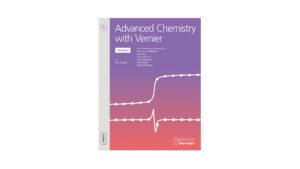Introduction
The term alum is a general family name for a crystalline substance composed of cations with
1+ and 3+ charges. In this experiment, you will synthesize a type of alum called potassium aluminum sulfate dodecahydrate, KAl(SO4)2•12H2O. You will synthesize this compound by placing the appropriate ions in one container in aqueous solution and then evaporate the water to form the alum crystals.
This particular compound has been chosen because it is relatively simple to prepare a pure sample. The process of synthesizing this compound is interesting in that it involves both chemical and physical reactions. Chemically, aluminum is oxidized from aluminum foil to prepare the Al3+ ions. Physically, as the solution that contains the mixture of ions evaporates, crystals will form which contain six waters of hydration bonded to the aluminum ion and six waters bonded to the potassium ion.
Aluminum is considered a reactive metal, but because its surface is usually protected by a thin film of aluminum oxide, it reacts slowly with acids. It does, however, dissolve quickly in basic solutions. Excess hydroxide ion converts the aluminum to the tetrahydroxoaluminate (III) ion, [Al(OH)4]–, and a slow addition of acid will precipitate the white, gelatinous aluminum hydroxide, Al(OH)3. Continued addition of acid causes the hydroxide ions to be completely neutralized, and the aluminum exists in solution as the hydrated ion [Al(H2O)6]3+. Aluminum hydroxide is considered to be an amphoteric hydroxide because it dissolves in both acids and bases.
Objectives
In this experiment, you will
- Synthesize a sample of potassium aluminum sulfate dodecahydrate (alum).
- Observe and record the process of synthesizing a compound.
- Calculate the percent yield of your synthesis.
Sensors and Equipment
This experiment features the following sensors and equipment. Additional equipment may be required.
Option 1

Ready to Experiment?
Ask an Expert
Get answers to your questions about how to teach this experiment with our support team.
- Call toll-free: 888-837-6437
- Chat with Us
- Email support@vernier.com
Purchase the Lab Book
This experiment is #15A of Advanced Chemistry with Vernier. The experiment in the book includes student instructions as well as instructor information for set up, helpful hints, and sample graphs and data.


